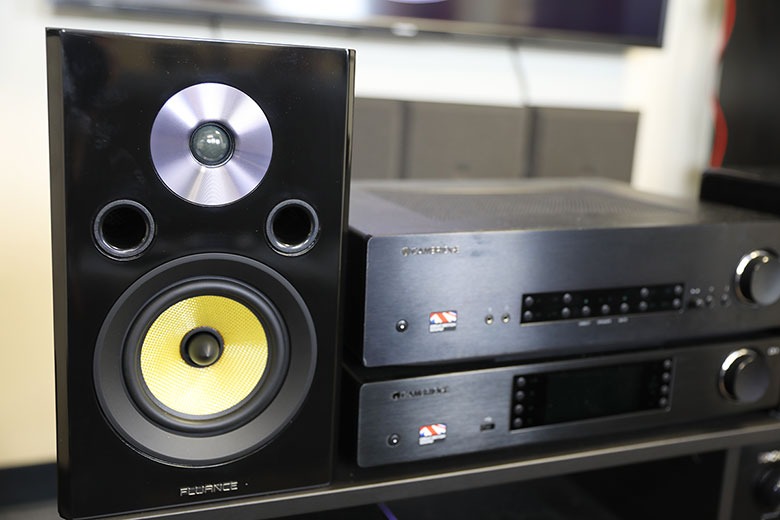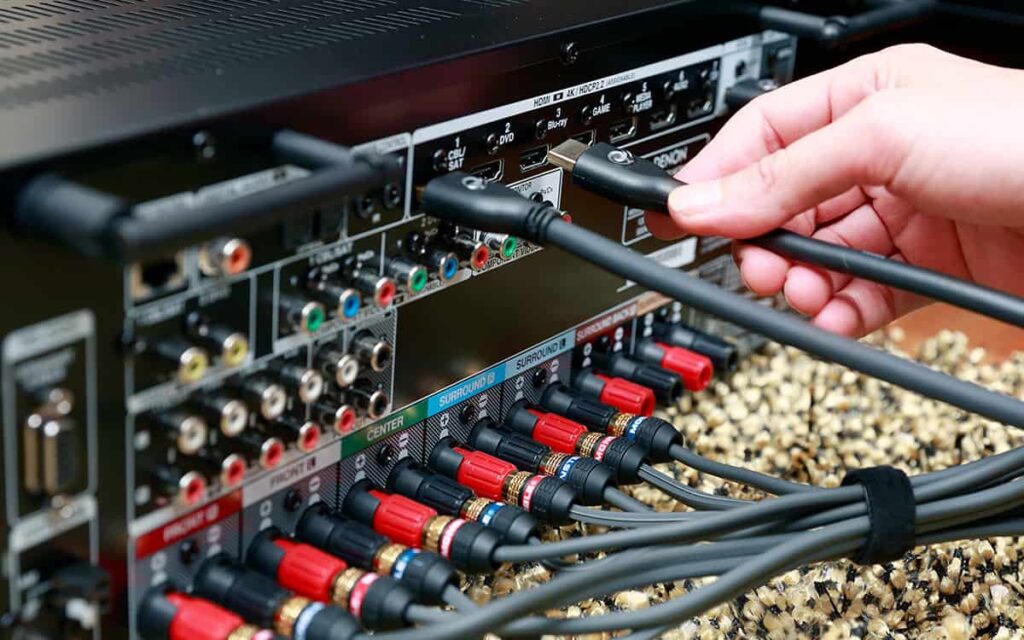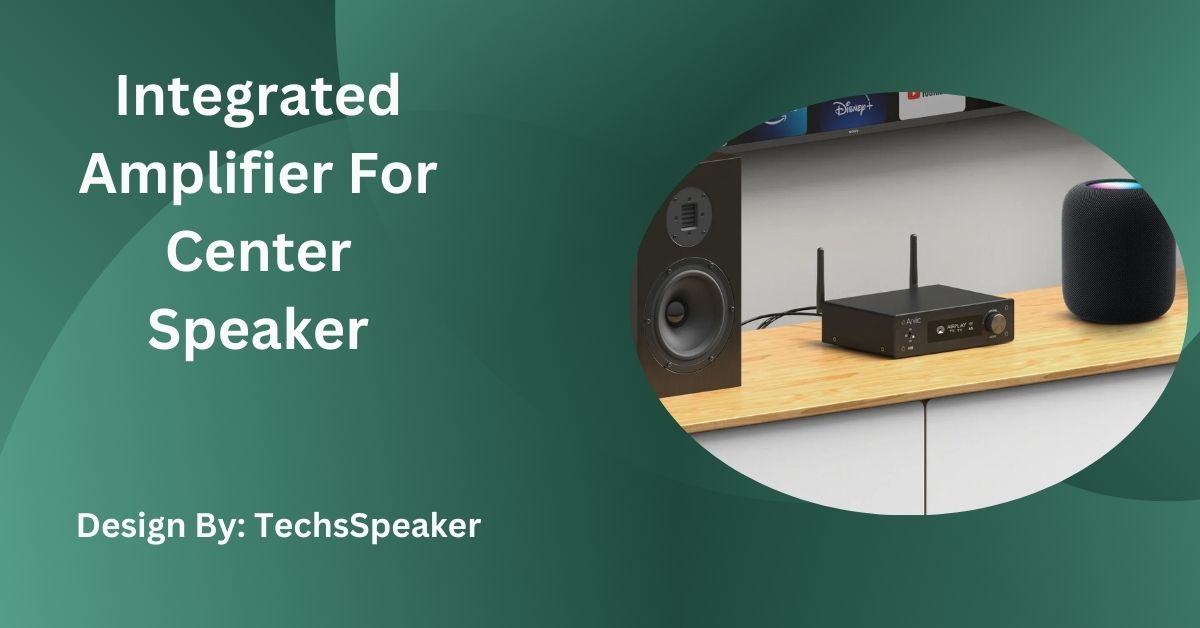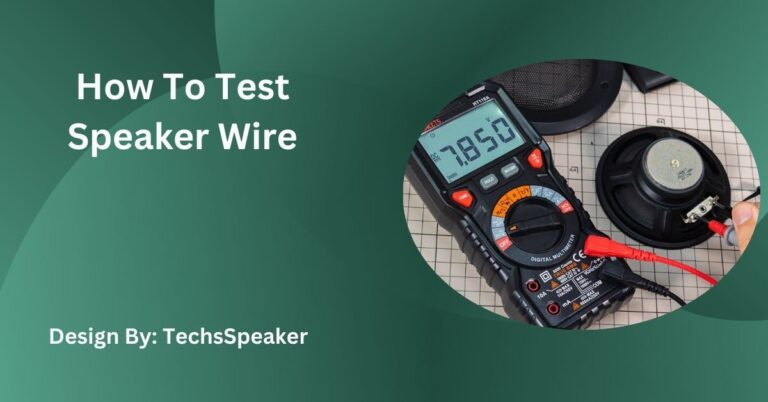Integrated Amplifier For Center Speaker – DIY Methods and Tips!
Setting up an integrated amplifier for your center speaker enhances sound quality for movies, music, and TV shows by ensuring the speaker gets the right power and signal.
Setting up an integrated amplifier for your center speaker can greatly improve your audio experience, making movies, music, and TV shows sound richer and more engaging. This guide will help you understand the setup, choose the right amplifier, and follow safe and effective methods for installation. We’ll also cover tips for optimizing sound quality.
Understanding the Setup:
Before diving into the details, it’s important to know what an integrated amplifier does. An integrated amplifier combines two functions: a preamplifier, which prepares the audio signal, and a power amplifier, which drives the speaker. This combination simplifies the setup and ensures your center speaker gets the right amount of power and signal for the best sound quality.
Choosing the Right Amplifier for Your Center Speaker:

Picking the right amplifier is crucial for great sound. Here’s what to look for:
- Power Rating: Make sure the amplifier’s power matches your center speaker’s needs. Too little power can result in poor sound, while too much power can damage the speaker.
- Impedance: Check the speaker’s impedance (measured in ohms) and ensure the amplifier can handle it. The impedance of the majority of speakers is 4, 6, or 8 ohms.
- Features: Look for features like tone control, balance, and inputs for different devices.
Preparations Before Installation:
Being prepared before you start can save you time and effort. Gather all the necessary tools and materials and make sure you understand the steps involved.
Checklist of Tools and Materials
- Integrated amplifier
- Center speaker
- Speaker wires (enough length to reach from the amplifier to the speaker)
- Wire stripper (for preparing the speaker wires)
- Screwdriver (for securing connections)
- User manuals (for both the amplifier and speaker)
Safety Precautions
Safety should always come first when working with electronics. Here are some key tips:
- Unplug the Amplifier: Make sure the amplifier is not connected to the power outlet before you start working.
- Avoid Water: Keep the amplifier and speaker away from water and damp areas.
- Follow Guidelines: Stick to the manufacturer’s instructions and guidelines to avoid damage or injury.
Method 1: Using a Passive Center Channel Adapter
A passive center channel adapter is a simple and effective way to connect your center speaker.
The Advantages of Using a Passive Center Channel Adapter
- Easy to Use: This method is straightforward and doesn’t require much technical knowledge.
- Affordable: Passive adapters are usually less expensive than other solutions.
- Compatible: They work well with most center speakers and amplifiers.
Also Read: What Size Speaker Wire For Subs – A Complete Guide!
Method 2: DIY Method Using Resistors
If you enjoy DIY projects, using resistors to connect your center speaker can be a rewarding option.
Resistors Implications on Sound Quality and Speaker Load
Using resistors can help balance the load on your amplifier and speaker. However, it might slightly change the sound quality. It’s important to use the correct resistor values to prevent damage.
Instructions to Connect
- Calculate Resistor Values: Use online calculators or formulas to determine the right resistor values based on your equipment.
- Solder the Resistors: Carefully solder the resistors into the speaker wires.
- Test the Setup: Turn on the amplifier and test the sound. Make adjustments as needed to achieve the best quality.
Method 3: Using a Home Theater Receiver

A home theater receiver is a popular and effective choice for connecting a center speaker.
Connecting a Center Speaker with a Multi-channel Receiver: Guidelines
- Read the Manual: Start by reading the receiver’s manual to understand its features and setup process.
- Connect the Speaker: Attach the speaker wires to the receiver’s center channel output and the center speaker’s input.
- Configure the Receiver: Use the receiver’s on-screen setup guide to configure settings for optimal performance.
Best Tips for Optimizing Sound Quality:
- Proper Placement: Place your center speaker at ear level, directly in front of your seating area. This helps ensure clear dialogue and balanced sound.
- Calibration: Use your receiver’s calibration tool to adjust sound levels and balance. Many receivers have automatic calibration features that make this easy.
- High-Quality Cables: Invest in good-quality speaker wires to minimize signal loss and maintain sound quality.
- Regular Maintenance: Keep your equipment clean and dust-free. Check connections regularly to ensure everything is secure.
By following these steps, you can set up an integrated amplifier for your center speaker and enjoy superior audio quality. Whether you’re watching a movie, listening to music, or enjoying a TV show, the right setup can make a big difference.
FAQ’s:
1. What is an amplifier that is integrated?
An integrated amplifier combines a preamplifier and power amplifier in one unit, simplifying setup and enhancing sound quality for your center speaker.
2. Why is power rating important?
Matching the amplifier’s power to the speaker prevents poor sound quality or potential damage to the speaker due to insufficient or excessive power.
3. What is impedance?
Impedance, measured in ohms, ensures the amplifier and speaker are compatible. Four, six, or eight ohms are the typical impedance of speakers.
4. Why use a passive center channel adapter?
It is easy to use, affordable, and compatible with most center speakers and amplifiers, making it a simple and effective connection method.
5. What are the benefits of using resistors?
Resistors balance the load on your amplifier and speaker but might slightly alter the sound quality. Use correct resistor values to prevent damage.
6. How do I connect a speaker to a receiver?
Connect the speaker wires to the receiver’s center channel output, and follow the receiver’s on-screen setup guide for optimal performance.
7. What is the best placement for a center speaker?
Place the center speaker at ear level, directly in front of your seating area, ensuring clear dialogue and balanced sound.
8. Why use high-quality cables?
High-quality cables reduce signal loss and maintain sound quality, ensuring the best performance from your integrated amplifier and center speaker.
Conclusion:
Setting up an integrated amplifier for your center speaker significantly improves audio quality for all your entertainment. By choosing the right amplifier, preparing thoroughly, and following safe installation methods, you can achieve the best sound. Whether using a passive adapter, resistors, or a home theater receiver, each method has its benefits. Optimize your setup with proper placement, calibration, and quality cables for an immersive audio experience.







